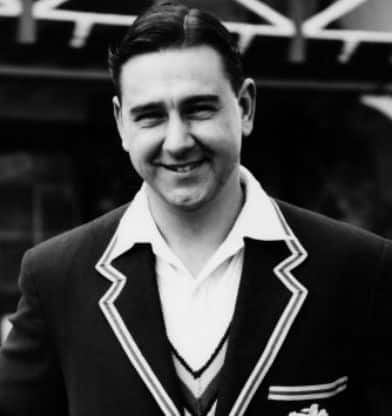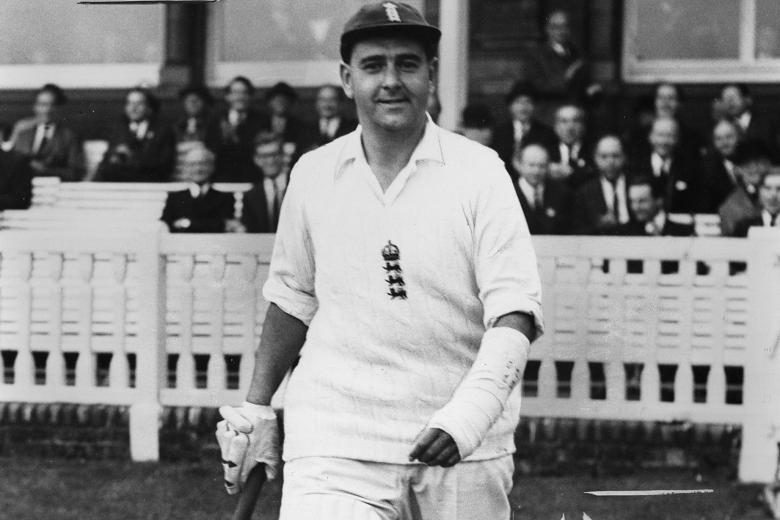Across epochs on English cricket terrain, Michael Colin Cowdrey exhibited world-class batting mastery befitting the honorary “Baron” status later bestowed him. From his introduction in 1954, Cowdreyfashioneda pedigree spanning decades through technical precision and peerless poise.
Batting feats like seven Test hundreds against fearsome West Indies pace secured his stellar standing before 100 caps immortalized him amongst elite company.
Such longevity speaks to both fitness and faultless technique allowing dominance across generations of elite attacks. Despite humility pervading post-play persona, M.C. Cowdrey rendered bowlers helpless on crease occupation through concentration and graceful execution.
Article Highlights
Hide- Colin Cowdrey was born on December 24, 1932, in Bangalore, India, and came from a cricketing family.
- He showed early talent in cricket, captaining his school team and scoring a century on his debut for Kent County Cricket Club at the age of 18.
- Cowdrey had a successful career, achieving several notable milestones such as becoming the first cricketer to play 100 Test matches and scoring 100 first-class centuries.
- He left a lasting legacy in cricket, epitomizing the 'spirit of cricket' through sportsmanship and integrity, pioneering strategic approaches and field placements, advocating for player safety, and serving as the President of the Marylebone Cricket Club (MCC).
Behind the statistical milestones lies a career extracting what cricket offers beyond runs and trophies. Leadership glimpses revealed appreciation for sportsmanship’s deeper essence – respect and perspective transcending heated competition’s outward desires. These timeless virtues found an ambassador in M.C. Cowdrey – a cricketing statesman for the ages.
Early Life and Upbringing
Born on December 24, 1932, in Bangalore, India, Michael Colin Cowdrey was cradled in the embrace of a family deeply rooted in the tradition of cricket, which laid the foundation for his illustrious career in the sport.
Cowdrey’s early immersion in cricket’s nuanced culture, particularly under the guidance of his father, Ernest, who played for the Indian Army and later for Kent, provided a rich soil from which his passion and skill for the game could grow.
This environment instilled in him not only the technical competencies required for the sport but also the quintessential values of sportsmanship and team spirit.
Ted Dexter
In the 1960s and beyond, Ted Dexter imprinted dynamism on English cricket, captaining with ... Read More
Cowdrey’s formative years were characterized by a rigorous regimen that honed his cricketing prowess. His education in England, at Homefield Preparatory School and subsequently at Tonbridge School, included a structured cricket curriculum that further galvanized his technical acumen and strategic understanding of the game.
These institutions, renowned for their emphasis on cricket, offered Cowdrey a crucible for refinement, where his latent talent was sculpted into a formidable presence on the field.
The synthesis of familial influence, disciplined training, and academic reinforcement in cricket coalesced to sow the seeds of what would become a storied tenure in international cricket.
Colin Cowdrey: Rise to Cricket Stardom
Building on the robust cricket foundation established during his youth, Colin Cowdrey’s ascent to cricket stardom commenced with his debut for Kent in 1950, marking the beginning of a distinguished professional career.
His remarkable aptitude for the sport was evident as he amassed runs with a grace that belied his years. With a technique that combined classical strokes and an unflappable temperament, Cowdrey’s style was a harbinger of his future success at the international level.
As his prowess with the bat burgeoned, so did his reputation. His domestic performances were a prelude to his selection for the English national team, where his debut in 1954 against the formidable West Indies solidified his status as a cricketer of exceptional caliber.
His analytical approach to batting, characterized by meticulous footwork and an ability to read bowlers’ intentions, enabled him to accumulate runs consistently.
Cowdrey’s rise was not simply a function of his technical skill; it was also a testament to his psychological acumen. He possessed an unwavering focus and the capacity to adapt to varied pitch conditions and bowling attacks, traits that would underpin his storied tenure in cricket’s elite echelons.
Notable Career Milestones
Throughout his illustrious cricket career, Colin Cowdrey reached numerous milestones that not only exemplified his skill with the willow but also cemented his legacy as one of the game’s greats.
These achievements, framed within the context of the cricketing landscape of his time, highlight his exceptional talent and enduring influence on the sport.
To encapsulate Cowdrey’s significant career milestones:
- First Test Century: Cowdrey demonstrated early promise by scoring his maiden Test century against West Indies in 1954, a pivotal moment that announced his arrival on the international stage.
- 100 Test Appearances: A testament to his longevity and consistency, Cowdrey became the first cricketer to play 100 Test matches, achieving this feat in 1968 against Australia.
- Century of Centuries: His ability to amass runs was further evidenced when he joined the elite group of batsmen to have scored 100 first-class centuries, reaching this milestone in 1973.
- International Comeback: Cowdrey’s resilience and class were on display when he was called up to face the fearsome West Indies pace attack in 1974, at the age of 41, after a significant time away from the international arena.
Each of these milestones represents a chapter in the annals of cricket history, wherein Cowdrey’s prowess and adaptability across eras were incontrovertibly etched into the sport’s fabric.
Colin Cowdrey: Statistical Highlights
Delving into the statistical achievements of Colin Cowdrey, his career aggregates and averages paint a vivid picture of his mastery with the bat and his significant contribution to cricket.
Cowdrey’s statistics are a testament to his enduring class and technical proficiency. He amassed 7,624 runs in Test cricket, a formidable tally during his era, highlighting his consistency and longevity at the international level.
His batting average of 44.06 reflects not only his ability to accumulate runs but also to do so with a commendable level of reliability and efficiency.
Furthermore, Cowdrey’s 22 centuries in Test matches underscore his aptitude for building substantial innings and steering his team to commanding positions.
His conversion rate from fifties to hundreds was noteworthy, illustrating his mental fortitude and concentration in crossing the three-figure mark. Additionally, Cowdrey’s record includes 120 catches in Test cricket, indicating his prowess and agility in the field.
His First-Class cricket statistics are equally impressive, with an astonishing 42,719 runs, including 107 centuries and 243 fifties, which signify his dominance over domestic bowlers.
These figures, combined with an average of 40.89, corroborate Cowdrey’s status as a stalwart of the game, whose technical excellence and strategic acumen were evident throughout his two-decade-long career.
Legacy and Influence
While Colin Cowdrey’s statistics firmly establish his prowess on the pitch, his enduring legacy and influence on the game of cricket extend far beyond the numbers. Cowdrey’s impact on cricket is multifaceted, reflecting his role as a sportsman, a leader, and an ambassador of the game.
His contribution to cricket can be elucidated through a series of defining elements:
- Sportsmanship: Cowdrey epitomized the ‘spirit of cricket,’ respecting opponents and playing the game with integrity. His demeanor set a standard for conduct both on and off the field.
- Innovation: As a tactician, Cowdrey was instrumental in pioneering strategic approaches and field placements that have influenced generations of cricketers and captains.
- Advocacy: His advocacy for protective gear, notably the cricket helmet, displayed his foresight in prioritizing player safety, thereby transforming the game’s approach to injury prevention.
- Leadership: Beyond his captaincy, Cowdrey served as the President of the Marylebone Cricket Club (MCC), where he was a driving force in upholding the traditions of the game while steering it through the evolving landscape of modern cricket.
Cowdrey’s legacy is enshrined not just in the record books, but in the ethos of cricket, inspiring sportsmanship, strategic evolution, safety, and leadership among those who cherish this esteemed game.
Final Take
In conclusion, Colin Cowdrey’s illustrious career in cricket is marked by significant achievements and enduring influence. His statistical records bear testimony to his skill and dedication to the sport.
Cowdrey’s legacy transcends numbers, setting a benchmark in sportsmanship and character. His contributions to cricket extend beyond the pitch, impacting future generations.
The reverence for his sportsmanship and the respect he commanded elucidate the profound impact Cowdrey has had on the game and its history.

















